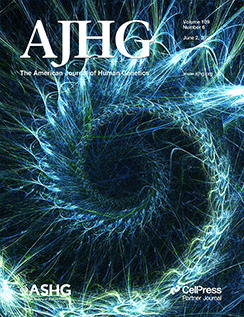良性错义变体“真理集”的有效性用于功能分析的验证:现状和系统方法。
IF 8.1
1区 生物学
Q1 GENETICS & HEREDITY
引用次数: 0
摘要
变异效应(MAVEs)的多重分析提供了有希望的功能证据的新来源,可能有助于改进种系基因组变异的分类,特别是罕见的错义变异,这些变异通常被称为不确定意义变异(VUSs)。然而,矛盾的是,MAVEs临床应用证据强度的量化需要构建包含已被明确归类为致病和良性的错义变体的“真理集”。在这项研究中,我们展示了良性truthset大小如何成为适用于致病性的功能证据的主要驱动因素(PS3)。我们证明,当使用现有的ClinVar分类作为良性错义真理集变体的来源时,只有19.8%(23/116)的已建立的癌症易感基因在模拟假设的新MAVE验证时具有“强”的PS3证据强度(也适用完美一致性的有利假设)。我们描述了一个良性真值集构建的系统框架,其中通过建立的ACMG/AMP组合规则,包括种群频率、计算机证据代码和病例控制信号,同时评估感兴趣基因中所有可能的错义变体的(可能的)良性分配。我们将这一框架应用于8个遗传性乳腺癌和卵巢癌基因,证明系统生成的良性错义真理集允许以更大(或同等)的强度(CHEK2达到“中等”,其他7个基因达到“强”)最大限度地应用PS3,而不是仅从ClinVar≥2 *分类中获得的。鉴于许多基因很少存在良性分类错义变异,我们提出,将这一系统框架更广泛地应用于疾病基因将对充分利用MAVEs的价值非常重要。本文章由计算机程序翻译,如有差异,请以英文原文为准。
Availability of benign missense variant "truthsets" for validation of functional assays: Current status and a systematic approach.
Multiplex assays of variant effect (MAVEs) provide promising new sources of functional evidence, potentially empowering improved classification of germline genomic variants, particularly rare missense variants, which are commonly assigned as variants of uncertain significance (VUSs). However, paradoxically, quantification of clinically applicable evidence strengths for MAVEs requires construction of "truthsets" comprising missense variants already robustly classified as pathogenic and benign. In this study, we demonstrate how benign truthset size is the primary driver of applicable functional evidence toward pathogenicity (PS3). We demonstrate, when using existing ClinVar classifications as a source of benign missense truthset variants, that only 19.8% (23/116) of established cancer susceptibility genes had a PS3 evidence strength of "strong" attainable when simulating validation for a hypothetical new MAVE (also applying favorable assumption of perfect concordance). We describe a systematic framework for benign truthset construction in which all possible missense variants in a gene of interest are concurrently assessed for assignation of (likely) benignity via established ACMG/AMP combination rules, including population frequency, in silico evidence codes, and case-control signal. We apply this framework to eight hereditary breast and ovarian cancer genes, demonstrating that systematically generated benign missense truthsets allow maximum application of PS3 at greater (or equivalent) strength-reaching "moderate" for CHEK2 and "strong" for the other seven genes-than those derived from ClinVar ≥2∗ classifications alone. We propose, given many genes have few existing benign-classified missense variants, that the application of this systematic framework to disease genes more broadly will be important for leveraging full value from MAVEs.
求助全文
通过发布文献求助,成功后即可免费获取论文全文。
去求助
来源期刊
CiteScore
14.70
自引率
4.10%
发文量
185
审稿时长
1 months
期刊介绍:
The American Journal of Human Genetics (AJHG) is a monthly journal published by Cell Press, chosen by The American Society of Human Genetics (ASHG) as its premier publication starting from January 2008. AJHG represents Cell Press's first society-owned journal, and both ASHG and Cell Press anticipate significant synergies between AJHG content and that of other Cell Press titles.

 求助内容:
求助内容: 应助结果提醒方式:
应助结果提醒方式:


